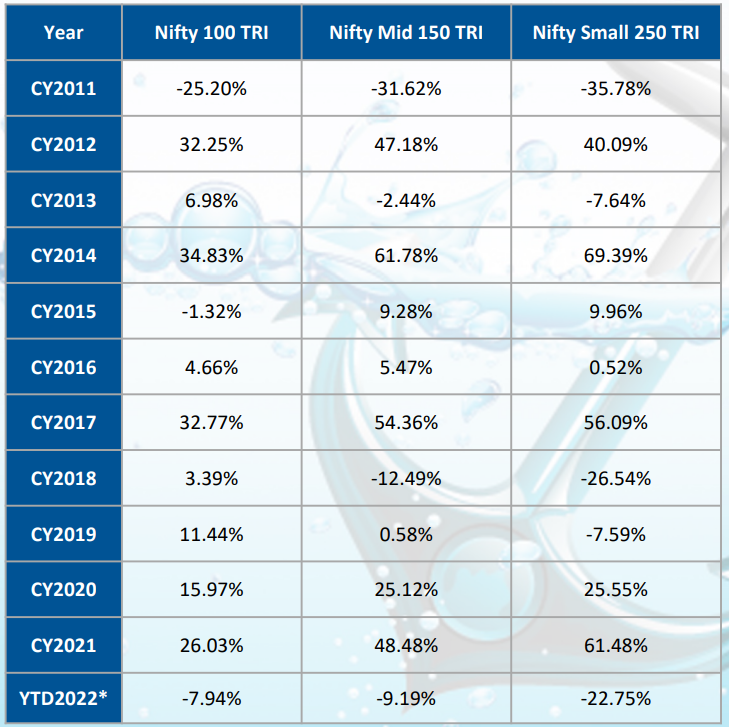Quant AMC has launched an NFO, which is now open for subscription from July 20th, 2022, and closes on August 3rd, 2022.
Investment Objective: To generate wealth over the long term, suitable for investors having a moderate risk appetite who are comfortable with volatility in the short term.
Investment Strategy: As the name suggests, the fund aims to invest in large-cap with its selection predominantly from the top 100 stocks of Nifty. The fund follows a unique style that emphasizes dynamic-style investing based on its in-house VLRT model to select potential outperformers with an overall macro-centric outlook. The fund will invest at least 80% of its portfolio in large-cap companies, and the remaining 20% can be in large-caps or any other Equity market-cap/Debt Instruments or Cash. The focus is to create returns that can outperform the benchmark by active fund management.
Fund Manager: Ankit Pande, Sandeep Tandon, and Vasav Sahgal
Benchmark: Nifty 100 TRI
Minimum Lumpsum Investment Amount: Rs 5,000
Minimum SIP Investment Amount: Rs 1,000
Fund Management Process:
- The fund follows active management with the expectation of generating alpha over the long term.
- The investment universe is majorly from the Nifty 500 TRI.
- The portfolio is constructed and managed through the following process:
- VLRT, an investment framework designed in-house is followed:
a) V - Valuation Analytics
b) L - Liquidity Analytics
c) R - Risk Appetite Analytics
d) T - Timing
- Include “Predictive Analytics” to sustain and outperform in an ever-changing macro environment.
- Follow “Adaptive Asset Allocation” instead of traditional investing to make the most by involving market timing indicators.
- Use Dynamic-style rebalancing to churn and periodically strengthen the portfolio.
4. The focus is not on any sector/theme but is driven by a multi-dimensional approach.
5. Prominence is given to overall macro factors rather than micro-specific elements.
Opportunity:
Large-caps, historically, are known for their resilience when compared to mid and small-caps. They offer significant downside protection and perform better during extreme market conditions.

The extent of volatility is experienced lesser by large-caps when positioned against mid and small-caps, making it more stable for investors. The level of drawdowns experienced by mid and small segments of the market is much deeper and sharper.
Based on our analysis, we have observed the following pros and cons:
Pros:
- Offers superior downside protection over a longer time frame
- Relatively more stable and less volatile when compared to mid and small caps
- Mitigates risk by using dynamic-style investing
- Robust internal processes of the fund house to perform consistently during different market periods
- Focuses on India’s biggest companies that have a proven track record of growth and revenue
Cons:
- The investment universe is limited to only large-caps
- Relatively smaller fund house with lower Assets Under Management(AUM)
- Strong reliance on market timing indicators and predictive analytics, which may not work at all points in time
Large-caps, traditionally, have formed the core part of investment portfolios for the majority of investors as it not just offers stability but also succeeds in delivering inflation-beating returns. A Large-Cap approach would be ideal for a moderate-risk investor to participate in the growth story of India’s biggest companies, in turn creating sustainable wealth in the long run.
It is of utmost importance that the fund is discussed with your financial advisor and then ascertain whether it is suitable to invest in. Always read the scheme documents thoroughly before investing.

